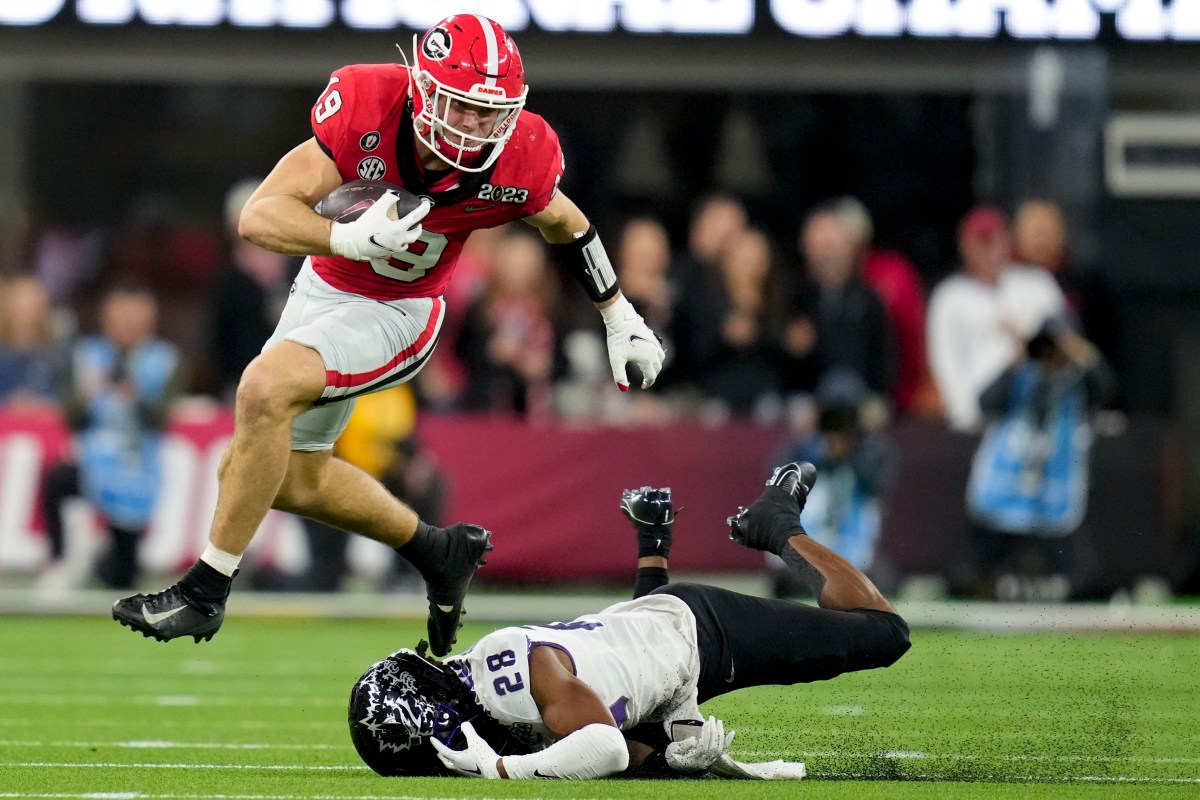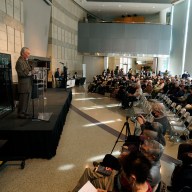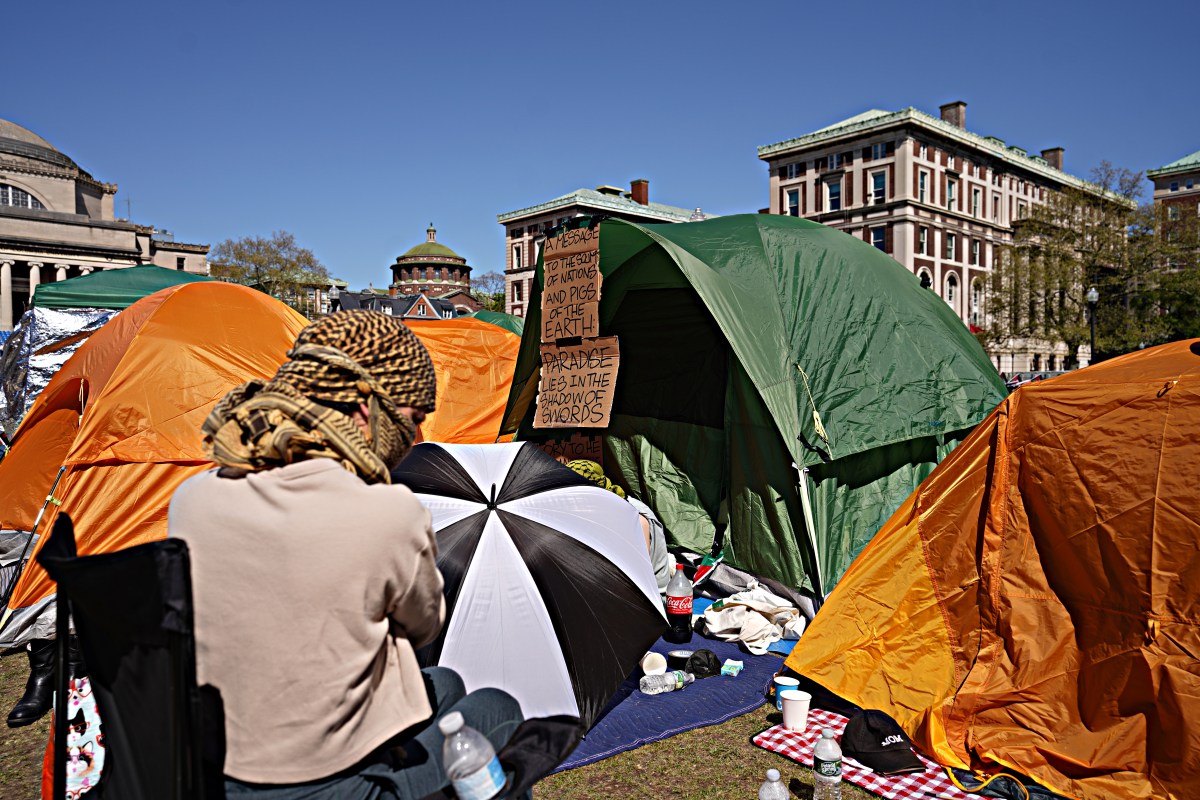 Notorious filmmaker John Waters gets his first complete retrospective at the Lincoln Center starting this weekend.
Notorious filmmaker John Waters gets his first complete retrospective at the Lincoln Center starting this weekend.
Credit: Getty Images
Once upon a time John Waters made people angry. Today he’s a Broadway name. He does spoken word shows, regularly files time as a raconteur and wit and even this summer had a bestselling book (“Carsick: John Waters Hitchhikes Across America”). The new, complete retrospective of his films — the first ever in the U.S. — that starts Friday at the Film Society of Lincoln Center should change that. Back on screens — where they were meant to be — are such shocking nasties as “Pink Flamingos,” “Female Trouble” and “Desperate Living.” All — save “Hairspray,” still his only PG-rated film — feature sights and acts we could never put in words, all once staples of the New York midnight movie scene — once it accepted his Baltimore-based work, that is.
Waters spoke to Metro about his old films, the really old films he made as a teen, haunting the underground movie scene as a teen and that time an NYU security guard caught him getting high in the dorms.
New York City’s underground and midnight movie circuit was pretty late to screen your films.
I didn’t really show any of my films till after “Pink Flamingos” became a hit at the Elgin Theater. Certainly New York has made up for it, because that played there forever. In the beginning the underground New York scene was completely New York-based. They were kind of snobby about it. If you weren’t in that school, basically you weren’t really doing anything.
It seems the underground would have embraced someone as extreme as you.
Underground cinema really changed everything. Jennifer Lawrence can be nude online today because of underground movies. You went to jail for being nude in films. The underground confused everything because they had arty sexiness, which won in the courts and overturned the laws. The underground was very, very important in the cinema you see today.
How often did you come up here from Baltimore to see movies?
I always came. I had a girlfriend — it was that long ago — and we would make up fake sorority weekend permission slips for our parents to sign. We’d go to New York on the Greyhound Bus. I pierced my ear once on the Greyhound Bus and blood was shooting out everywhere. At underground movie houses — I was never in the audience to see this — people were taken away in paddywagons seeing these movies. The screenings were raided. It was so exciting. It’s much better than stadium seating. Being taken away in a paddywagon from a movie — that’s going to the movies.
Today even Anthology Film Archives’ seats are comfortable.
All those theaters were uncomfortable. You had to suffer for your art. Just like fashion.
 John Waters is seen with Divine on the set of this first movie with synch sound, “Multiple Maniacs.”
John Waters is seen with Divine on the set of this first movie with synch sound, “Multiple Maniacs.”
Credit: Nelson Giles
What did you typically see?
In those days, everything. You could sit through movies no one has the patience to watch now — a Warhol movie where the first 60 minutes is so out of focus you couldn’t tell what it is. “The Flicker” gave you a nervous breakdown if you watched it because it would send you into epileptic fits. The audience then were more adventurous than today.
What was the make-up of the crowds, typically? Were there pervs just there to see nudity?
That was a bit later. It was beatniks turned hippies with Communist backgrounds and a good sense of humor. And pot.
I read you once said your underground films were making fun of underground films.
They weren’t making fun of them. They were underground movies. When I made “Pink Flamingos” and “Multiple Maniacs,” I wanted them to be midnight movies. Those came after underground movies. My early films were underground movies — so underground that no one ever saw them, and with good reason. But midnight movies came next, and that was a movement that really started at the Elgin Theater. The first was “El Topo,” and we followed “El Topo.” I knew any movie that finally played after “El Topo” would be the next underground hit, because “El Topo” played forever and ever. In those days you could play for a year in one theater. Even art films used to have posters that said, “45th big week!” Today if you get four weeks you’re a giant hit.
 Divine plays a good suburban girl turned showbiz murderer in “Female Trouble.”
Divine plays a good suburban girl turned showbiz murderer in “Female Trouble.”
Credit: Bruce Moore/New Line Cinema
How did you get your films shown before “Pink Flamingos”?
I would read Variety and find the weird art distributors, then I distributed them myself, with the Film-Makers Cooperative [run by NYC filmmakers, like Jonas Mekas and Stan Brakhage]. But I had a place called The Underground Cinema 12, run by a guy named Mike Getz. He had a successful underground theater chain that played all over the country. It was part of the Art Theatre Guild, which was a porno chain that legitimized themselves once a week, at midnight on Saturday, by screening all these great underground movies. It was on 20-some theaters, so it was good to be hooked up with them.
There’s a big difference between underground and midnight movies.
Underground movies weren’t that popular. Some were, like “Scorpio Rising” and “Flaming Creatures.” But it wasn’t like people came and it became a party. Some of the Warhol films were like that, but nobody was even watching the movies. It became a group experience to do at night, and everyone was going and getting stoned and watching these movies. The underground ones were artier. Not all of them — a lot were experimental movies, which were hardly great fun, as far as box office was concerned. I like those today more than I liked them then.
Your movies were kind of a blend of both underground and midnight movies.
They were exploitation movies for art theaters. I equally watched Bergman and Fellini as I did Herschell Gordon Lewis and Russ Meyer. Not many people were influenced by both.
 Divine (to the left of Ricki Lake) went in drag in Waters’ only PG-rated film, “Hairspray.”
Divine (to the left of Ricki Lake) went in drag in Waters’ only PG-rated film, “Hairspray.”
Credit: New Line/The Kobal Collection
This series actually has a sidebar on “Movies I’m Jealous I Didn’t Make,” some of which are difficult, highbrow art films. (And some of which are straight-up exploitation, like the rat movie “Of Unknown Origin.”)
I’ve always loved serious, depressing art movies. I like hard movies. I like movies that are hard to like.
Speaking of which, you regularly put Bruno Dumont on your annual top ten lists. He has a four hour film coming to the New York Film Festival.
I know people who saw it in Venice, and they were horrified, which sounds good to me.
Did you ever want to make an art film yourself?
No. People would just think I was kidding. I think my films ARE art films, in a weird way. They’re satires of genres. But am I ever going to make a serious drama with no laughs? No.
How do you view your very first films, which are in this series (and screening for free)?
Like juvenilia — like if someone found your diary from when you were 14 and read it. [Laughs] I’m mortified, but I love that they’re playing the Lincoln Center, because they only played once in the entire world, and the second time is at the Lincoln Center. That’s kind of funny.
You actually studied here, at NYU, but you’ve complained they kept showing “Potemkin.”
They didn’t constantly show it. I only went to one class and they showed it. It wasn’t NYU’s fault. I shouldn’t have gone to any school. I knew what I wanted to be. I went to 42nd St. every day, I took LSD, I was not a student. And they wouldn’t have let me make the things I wanted to. No school would have. I’m not against NYU in any way. I’m sort of against them when I walk past the Joe Weinstein Dormitory, where the scene of my crime happened.
Where you were busted for smoking pot with some students?
It wasn’t a bust. The police weren’t involved. A security guard caught us and called my parents and told them I needed expensive psychiatric treatment. [Laughs] My parents to this day don’t think it was funny. The security guard locked us in a room and said, “Don’t tell anybody.” So I called The Daily News. It was an early use of bad publicity to my own advantage.
 To date Waters’ last film is 2004’s NC-17 sex comedy “A Dirty Shame,” starring Tracy Ullmann.
To date Waters’ last film is 2004’s NC-17 sex comedy “A Dirty Shame,” starring Tracy Ullmann.
Credit: Fine Line Features/The Kobal Collection/James Bridges
At one point you called “Multiple Maniacs” your favorite. What is it today? Do you have a favorite?
To me they’re all the same. I never know why one’s a hit and why one isn’t. I do tend to root for the ones that didn’t do se well at the box office. So if you asked me today I’d pick “Cecil B. DeMented.”
You once said that in the “Battle of Filth” you won, even among today’s films. Do you find there are others that come close?
They’re not like my movies, but I love Gaspar Noe, Todd Solondz, Bruno Dumont, plenty of filmmakers. But I don’t think they copied me. I think they have extremes. Lars Von Trier is a perfect example.
“A Serbian Film” goes pretty far, to say the least.
Even I shied away from that one. I didn’t see that one.
There’s a marked difference between your first films, which almost have an anti-style, and later when you developed some craft.
Craft? Is that spelled with a K? Isn’t that a cheese?
Was relying more on composition and form a conscious decision on your part
Yes, it was conscious; I wanted them to look good! “Pink Flamingos,” they’d say, “Oh my god, it’s so primitive” — which is to say “amateur” if you didn’t like it. And to me that was the biggest budget we’d ever had! I felt like we were making “Cleopatra” when we made that. And it was in color!
You’ve gained a whole new, much more wholesome audience with the “Hairspray” and “Cry-Baby” musicals. Were they shocked when they actually rooted through your back catalogue?
They were in the beginning. But I’ve made so many other movies. You know what you’re getting when you go see a John Waters movie. And I don’t make anybody mad anymore! No matter what I say they just laugh now. Maybe they think I’m senile, I don’t know.
Are you sad about that?
No. It’s hilarious. Are you kidding? I won!
“50 Years of John Waters: How Much Can You Take?” runs at the Film Society of Lincoln Center from Sept. 5 through the 14th. A complete schedule can be found on their website.
Follow Matt Prigge on Twitter @mattprigge















